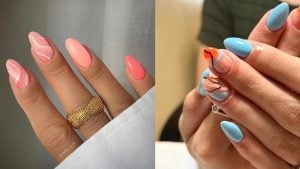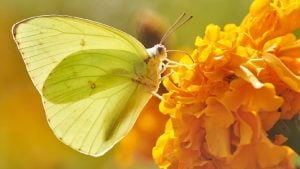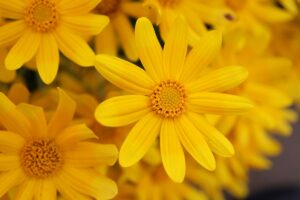Colors hold the power to evoke emotions, set the mood, and express our individuality. They have the ability to transform a drab room into a cozy haven or turn an ordinary painting into a masterpiece. While we are all familiar with basic color names such as red, blue, and yellow, there are countless unique and intriguing shades that often go unnoticed. These lesser-known hues have their own distinct origins, stories, and meanings, adding depth and richness to our understanding of color.
In this article, we will dive into the world of 30 lesser-known color names, exploring their origins, meanings, and hex codes. So, let’s embark on this colorful journey and discover the fascinating world of hues that may inspire you to see colors in a whole new light.
A bluish-gray or greenish-gray color, often seen in birds or plants, derived from the Latin word ‘glaucus,’ which means ‘bluish-gray.’
Xanadu (#738678)
A grayish shade of green, inspired by the ancient Chinese city and the Xanadu poem by Samuel Taylor Coleridge.
Gamboge (#E49B0F):
A deep yellow with a slight hint of orange, originally derived from a tree resin pigment used in Southeast Asia for varnish and lacquer.
Fulvous (#E48400):
A dull, yellowish-brown or tawny color, often used to describe animal fur or feathers, originating from the Latin word ‘fulvus,’ meaning ‘tawny.’
Zaffre (#0014A8):
A deep blue pigment made from cobalt oxide, similar to azure or sapphire, used in enamel and glassmaking since ancient times.
Cerulean (#007BA7):
A sky-blue or azure color, reminiscent of a clear day’s sky, named after the Latin word ‘caeruleus,’ which means ‘dark blue.’
Viridian (#40826D):
A vivid bluish-green pigment, often used in painting and design, created in 1859 as a more stable alternative to emerald green.
Amaranth (#E52B50):
A rich reddish-pink or purple hue, named after the amaranth flower, which symbolizes immortality in Greek mythology.
Mauveine (#915C83):
A bright purple color, synthesized from coal tar by Sir William Henry Perkin in 1856, marking the first synthetic organic dye.
Heliotrope (#DF73FF):
A pinkish-purple color, named after the heliotrope flower, which turns towards the sun, symbolizing devotion and eternal love.
Chartreuse (#7FFF00):
A vibrant shade of green or yellow-green, named after the French liqueur made by Carthusian monks, which has a similar color.
Eburnean (#F8ECD4):
An ivory-like shade, resembling the color of polished elephant tusks, derived from the Latin word ‘ebur,’ meaning ‘ivory.’
Razzmatazz (#E3256B):
A lively reddish-pink color, suggestive of energy and excitement, inspired by the American crayon manufacturer Crayola in the 1990s.
Fandango (#B53389):
A bold purplish-pink hue, named after the spirited Spanish dance, reflecting its vibrant and passionate nature.
Malachite (#0BDA51):
A striking green color, inspired by the mineral malachite used as a pigment in ancient Egypt, symbolizing transformation and spiritual growth.
Vermilion (#E34234):
A brilliant red or scarlet pigment, originally made from the powdered mineral cinnabar, used since antiquity for its vibrant and lasting hue.
Periwinkle (#CCCCFF):
A soft, pale blue color with a hint of lavender, named after the small, edible sea snail, reflecting the subtle hue of its shell.
Nacarat (#FF6C49):
A bright shade of orange, similar to the color of a fox’s fur, derived from the Arabic word ‘naqarat,’ which refers to an orange-red color.
Isabelline (#F4F0EC):
A pale, grayish-yellow color, often used to describe the coats of certain animals, named after Isabella I of Castile, whose undergarments were rumored to have turned this shade after years of not being washed.
Smaragdine (#50C878):
A brilliant emerald green color, derived from the Latin word for emerald, used to describe the lush green foliage and precious stones.
Falu Red (#801818):
A deep, earthy red color often seen on traditional Swedish wooden houses, originating from the Falun copper mine, where it was first produced as a byproduct.
Celadon (#ACE1AF):
A delicate, pale green with a grayish tint, often associated with Chinese pottery and ceramics, named after the character Celadon from L’Astrée, a French pastoral novel.
Limerick (#9DC209):
A shade of yellowish-green, named after the Irish city of Limerick, reflecting its lush countryside and vibrant cultural scene.
Alizarin Crimson (#E32636):
A deep, cool red pigment made from the madder plant or synthesized, used in painting and textiles since antiquity for its rich hue and excellent lightfastness.
Quinacridone Magenta (#8E3A59):
A vibrant, bluish-pink color used in painting, derived from quinacridone pigments, valued for their brilliance and stability.
Burnt Sienna (#E97451):
A warm, reddish-brown hue made from natural iron oxide pigments, used in painting and drawing for its earthy tones and versatility.
Puce (#CC8899):
A muted, brownish-purple color, said to be the shade of a flea’s bloodstain on a white background, named after the French word for ‘flea.’
Payne’s Grey (#536878):
A dark, blue-grey color named after the English watercolor artist William Payne, who often mixed this hue for his atmospheric landscapes.
Tyrian Purple (#66023C):
A deep, purple-red color produced from the secretions of the Murex sea snail, associated with ancient Phoenicians and Roman emperors for its rarity and luxuriousness.
Bistre (#3D2B1F):
A dark, yellowish-brown color made from the soot of wood fires, used as a pigment in painting and drawing for its warm undertones and ability to create depth.
Colors are an essential part of our lives, evoking emotions and conveying meaning in the world around us. This list of 30 unique and fascinating color names showcases the diversity and richness of hues we may not encounter every day.
Mikado (#7B3F00):
A deep, yellowish-brown color named after the title of the Japanese emperor, inspired by the rich hues of traditional Japanese textiles and lacquerware.
Thulian Pink (#DE6FA1):
A vivid, reddish-pink shade, named after the Thulite mineral found in Norway, prized for its unique color and rarity.
Bleu de France (#318CE7):
A bright, medium blue color associated with the French national flag and sports teams, representing the country’s history and cultural identity.
Coquelicot (#D2691E):
A vivid, poppy red color named after the French word for ‘poppy flower,’ symbolizing remembrance and the fallen soldiers of World War I.
Caput Mortuum (#C19A6B):
A dark, reddish-brown pigment, translating to ‘dead head’ in Latin, originally made from the residue of iron oxide in alchemy and used in painting.
Aureolin (#FFBF00):
A vibrant, yellow pigment discovered in the 19th century, valued for its brilliance and resistance to fading, used in watercolors and oil paints.
Pomp and Power (#B57EDC):
A rich, purple color with a regal and luxurious quality, named after the phrase ‘pomp and power,’ evoking opulence and authority.
Citrine (#E9D66B):
A lemon-yellow color named after the citrine gemstone, believed to promote positivity, prosperity, and creativity.
Cinnabar (#FF4D4D):
A bright, orangey-red color, named after the mineral used as a pigment in ancient Chinese lacquerware and paintings, symbolizing good fortune and joy.
Harlequin (#3FFF00):
A vivid, yellowish-green color associated with the colorful diamond-patterned costumes worn by the Harlequin character in Italian Commedia dell’arte.
Orange Peel (#FF6600):
A vibrant, reddish-orange hue reminiscent of the outer skin of a ripe orange, evoking a sense of freshness, energy, and vitality.
Sap Green (#568203):
A deep, earthy green color originally made from the juice of unripe buckthorn berries, used by artists for its muted, natural tones in landscapes and still life paintings.
Liseran Purple (#C8A2C8):
A soft, pinkish-purple color named after the liseran flower, a type of lily native to East Asia, symbolizing purity, rebirth, and maternal love.
By exploring these lesser-known shades, we can expand our understanding of color and open our eyes to new possibilities in art, design, and personal expression. So, the next time you create or observe a piece of art or simply look at the world around you, take a moment to appreciate the complex beauty and history of the colors that surround us.







